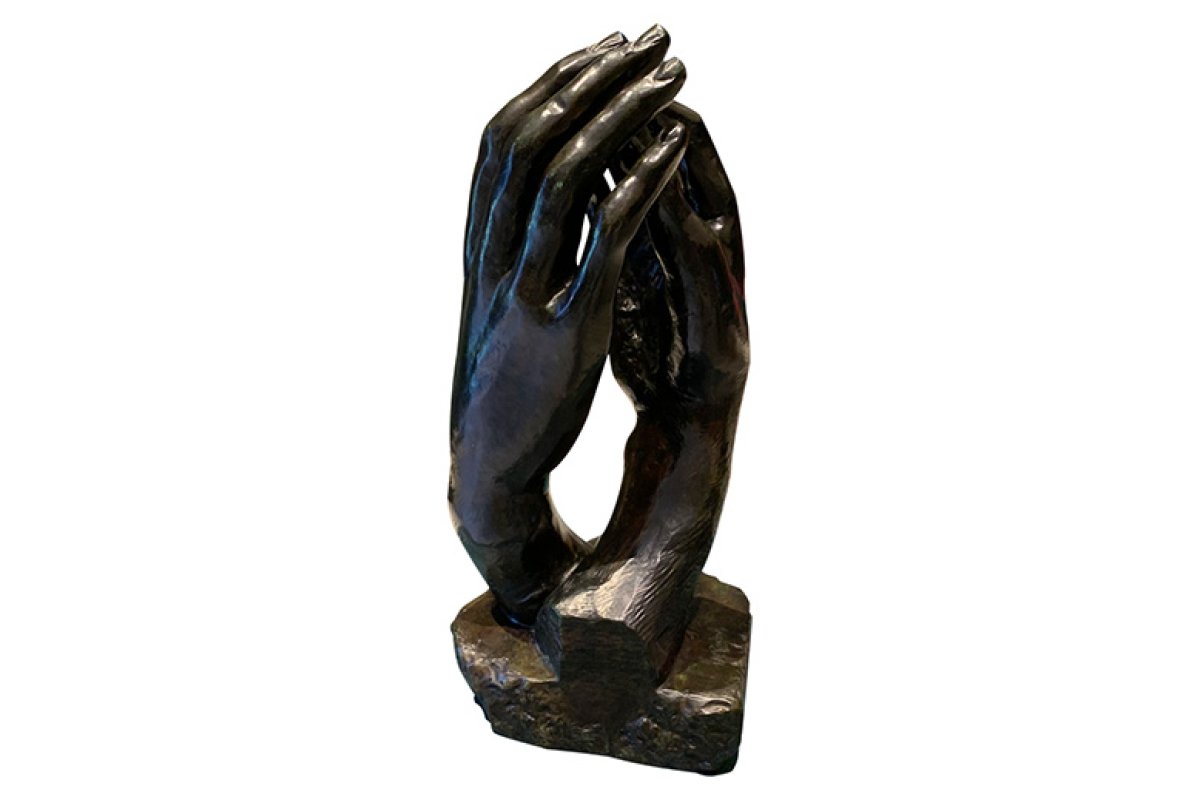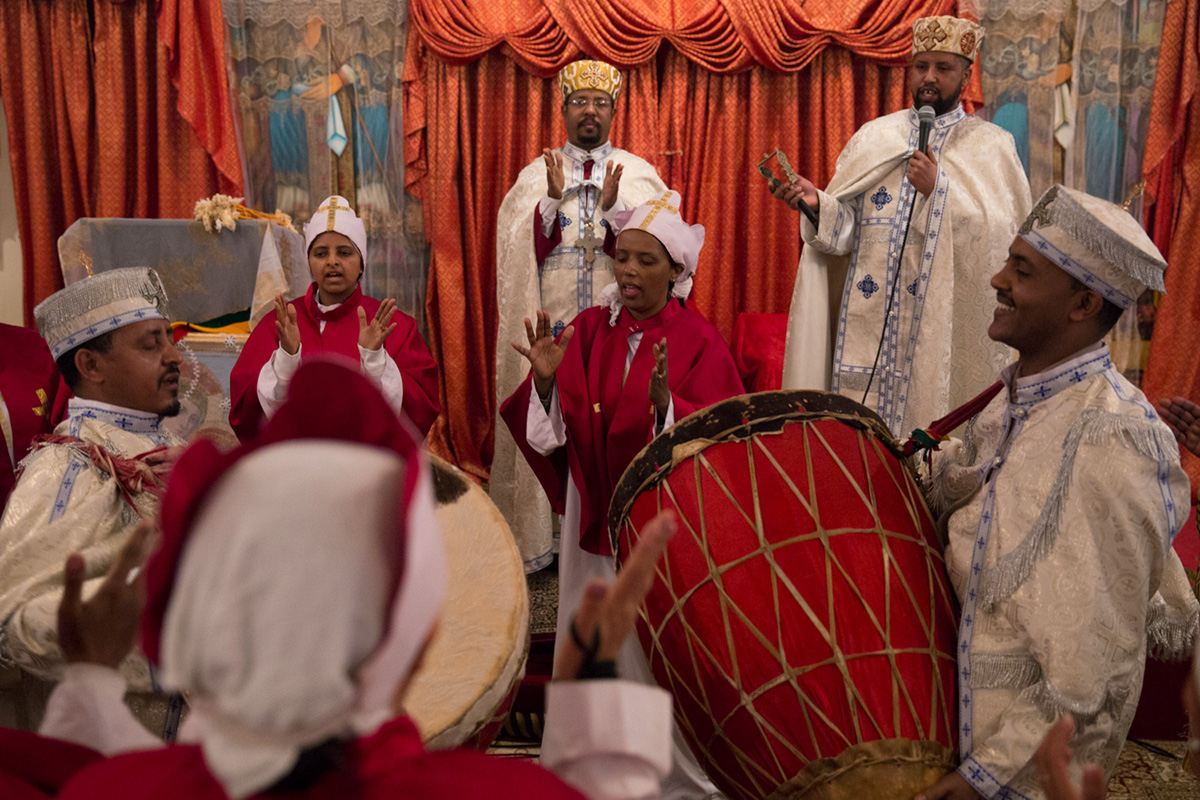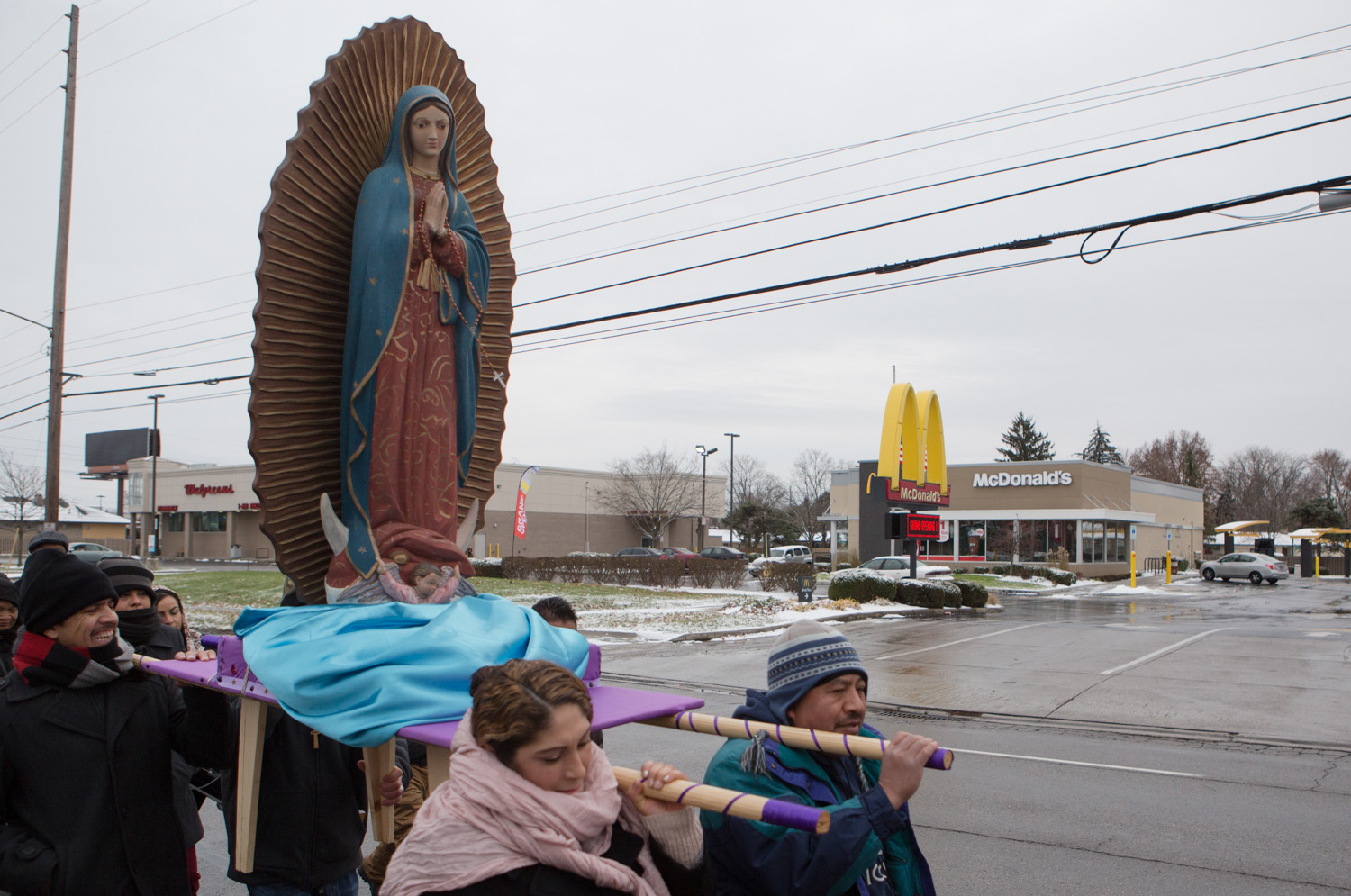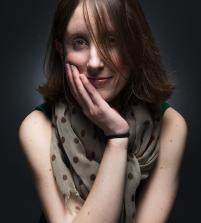
Smart Sightings | Embodying Religion in Rodin's "The Cathedral"
Time and again, my camera has taught me that religion is deeply enmeshed with the body and everyday lived experience. Rodin’s piece resonates similarly.
“Smart Sightings” is a new partnership between the Marty Center and the University of Chicago's Smart Museum of Art. This series invites readers to contemplate the many connections between art and religion through written reflections on pieces in the Smart’s exhibition, Calling on the Past: Selections from the Collection, on display at the museum from March 21, 2023 to February 4, 2024. Featuring illuminating pairings of objects from the museum’s permanent collection, Calling on the Past encouraged viewers to see the collection—and themselves—with fresh eyes.
This inaugural piece for the Smart Sightings series focuses on Auguste Rodin’s sculpture “The Cathedral,” which is not the artwork I was initially asked to write about. Given my background in photography, the Smart Museum suggested I focus on one of several image-based works featured in the Calling on the Past exhibition that the new series explores. Ironically, it is my photography experience that moved me instead toward a reflection on Rodin’s intertwining, cast bronze hands, which rest unassumingly on a pedestal near the exhibition entrance.
A photographer of religion for nearly fifteen years, I use documentary imagery to share the stories of religious traditions and communities around the globe. And yet, rarely do I encounter or photograph religion as I once thought of it: as something primarily read in the pages of sacred texts or observed within the walls of institutions. Instead, time and again, my camera has taught me that religion is deeply enmeshed with the body and everyday lived experience. Rodin’s piece resonates similarly.
Some of the connections between this sculpture, religion, and the body might be obvious, not the least of which is its title. Originally named “The Ark of the Covenant,” “The Cathedral” evokes elements of Gothic religious architecture in both name and form, as well as a notion common across many religious cultures: that the body is a sacred structure in its own right, which should be kept free of pollutants and, in some cases, ritually purified. “Or do you not know that your body is the temple of the Holy Spirit who is in you, whom you have from God, and you are not your own?” the Apostle Paul asks, adding, “For you were bought at a price; therefore glorify God in your body and in your spirit, which are God’s.”
Rodin’s piece also calls to mind the beliefs about bodies – how to care for them at birth, what becomes of them upon death, and how to regulate them in between – that are central to religious traditions, as well as notions of modesty and the degrees of bodily exposure that are permissible before the divine (and each other).
But what particularly strikes me about “The Cathedral” is that bodies were also integral to its construction. Rodin did not pull this piece from his imagination; as in many of his other works, he likely worked from life drawings of posed models, whom he observed and recorded from varying heights and perspectives. He translated his drawings into three-dimensional clay sculptures, which were used to create casts in multiple materials, which, in turn, could be used to create bronzes. This was likely a physically laborious process, for both model and artist.
Other forms of bronze casting can be even more intensive, as an artist friend, Michael Coppage, explained to me recently: In creating plaster molds for “12 Commandments” – his series of sculptural representations of physical commands police regularly direct at Black men (“Get on your knees!” for example) – he once held a pose for six and a half hours. The physical strain of the casting process has caused him to projectile vomit and nearly faint. (“12 Commandments” warrants a Sightings piece entirely of its own, but I’ll save that for another day.)
For me, “The Cathedral” speaks to the fundamental physicality that underlies religion and its expression. Religion does not just center on ideas about the body; it involves the physical experience of the body. It is embodied.
In my photographic experience, one place this has been especially apparent is the Orthodox Christian church. Some years ago, I photographed the Debre Nazareth St. Mary and St. Gebriel Ethiopian Orthodox Tewahedo congregation in St. Louis, Missouri. Members advised that I arrive around 7 AM on a Sunday – which, I later discovered, was well after most of them got there for the weekly liturgy. That morning, I entered the building to find children asleep in the carpeted stairwell, their parents having joined the congregation long before sunrise for a baptism and for cycles of recitation, prayer, standing, kneeling, and music in the incense-laden sanctuary.
Photograph by Lauren Pond, 2019.
Indeed, as Vlad Naumescu writes in Praying with the Senses, highly choreographed rituals and physical stamina form the basis of Orthodox Christian liturgical practice, where a combination of “mastery and mystery” are necessary for accessing the divine. Quoting author Paulos Ma Gregorios of the Indian Orthodox Church, he says, “Prayer is ‘an act of the whole man, body, soul, and spirit’ . . . including posture, gestures, visual focus, speaking, and even wandering thoughts.”
Religion engages the senses in more mundane ways, too. As I learned from my previous work with the American Religious Sounds Project, religion is deeply aural. It sounds like church bells, the Islamic call to prayer, music, and recitation – but also like protest chants, the popping oil of Lenten fish fryers, and Jewish children’s bedtime prayers. It tastes like bittersweet wildflower mead, home-brewed by certain Pagans, and slow-roasted pork prepared during a Serbian Orthodox church festival. It smells like the cleansing incense used in Wiccan homes and the acrid smoke from the ritual burning of Tibetan Buddhist prayer flags. It moves – in dance and procession, in kneeling and prostration, inside houses of worship and beyond, where it mingles with the pulse of everyday life.
Photographs by Lauren Pond, 2015-2019. Top and bottom right photographs: Used with permission of The Ohio State University. Produced with support from the American Religious Sounds Project.
And, importantly, it is tactile. Religion feels like other people. One seemingly debated feature of “The Cathedral” is the ambiguous gesture of the sculpted hands: Upon initial view, they appear poised to join in supplication, or to engage in another similar gesture of devotion. In fact, the hands belong to two individuals whose bodies meet as the fingertips of one hand explore the tips of the other,1 navigating the skin’s plateaus and valleys.
Once, while photographing a protest outside an Ohio mosque, I came across a woman who had arrived with a cluster of handmade, Islamophobic signs decrying Sharia, among other things. As she hurled insults, a small but persistent group of counter-protesters calmly tried to engage her in conversation and invite her into the mosque for breakfast and conversation. She finally accepted when a Muslim woman approached with open arms and offered a hug. Video and photos of the embrace went viral in the media, with some outlets referring to it to as a “hug felt around the world.”
“I could just feel her getting limp, letting go of all that anger and fear,” Cynthia de Boutinkhar, the Muslim woman, told ABC. “We’d been trying to convince her to come inside for 40 minutes, and it seems like my hug did something to her.”
Not all examples of religious encounter have a rosy outcome, of course, but “The Cathedral” reminds us of the capacity of contact to create connection, and even empathy. At a time when, more often than not, public discussion of religion focuses on conflict and division, Rodin’s sculpture speaks to the power of touch – to the sacred act of creating space for, and sharing space with, one another.
Featured photograph: Auguste Rodin, The Cathedral, 1908 (model), Cast bronze. Smart Museum of Art, The University of Chicago, The Joel Starrels, Jr. Memorial Collection, 1974.165. Image by author.
1 Charles E. Slatkin, Rodin: Sculptures and Drawings (New York: Slatkin Galleries, 1963), 17, part of object file 1974.165, The Joel Starrels, Jr. Memorial Collection, Smart Museum of Art, University of Chicago, Chicago IL.





